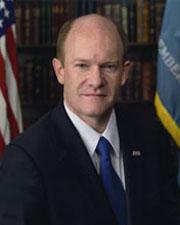0
NO TIME TO Waste Act
3/13/2024, 11:19 PM
Summary of Bill S 2889
The bill aims to increase recycling rates and reduce the amount of waste that ends up in landfills. It includes provisions for funding research and development of new recycling technologies, as well as grants for local governments to improve their recycling programs.
Additionally, the NO TIME TO Waste Act seeks to establish a national recycling goal of 50% by the year 2030. This goal would be achieved through a combination of education and outreach programs, as well as incentives for businesses to reduce their waste and increase their recycling efforts. Overall, the NO TIME TO Waste Act is a comprehensive piece of legislation that aims to address the growing problem of waste management in the United States. If passed, it has the potential to significantly reduce the amount of waste that ends up in landfills and promote a more sustainable approach to waste management.
Congressional Summary of S 2889
New Opportunities for Technological Innovation, Mitigation, and Education To Overcome Waste Act or the NO TIME TO Waste Act
This bill directs the Department of Agriculture (USDA) to take several actions to reduce U.S. food loss and waste (FLW).
Under the bill, food loss means the food that does not reach a consumer as a result of an issue in the production, storage, processing, or distribution phase. Food waste means that food intended for human consumption is unconsumed for any reason at the retail or consumption phase.
The bill requires USDA to collaborate with the Food and Drug Administration and the Environmental Protection Agency to carry out a December, 17, 2020, agreement to coordinate federal efforts to cut FLW.
Further, USDA must establish an Office of Food Loss and Waste to support the existing role of the Food Loss and Waste Liaison. The office must also, among other things, establish
- a grant program to support collecting data on existing state and local FLW policies (and the office must use the data to establish model policies for state and local governments);
- a block grant program for states and Indian tribes to develop and support food recovery infrastructure and innovative food distribution models; and
- a grant program to incentivize state, municipal, local, and tribal governments to establish public-private partnerships that commit to reducing FLW by 50% by 2030.
The Office of Food Loss and Waste must also initiate a national FLW education and public awareness campaign.

